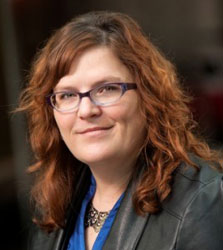 After much consultation with the public and their own administration, the City of Saskatoon approved its official Growth Plan to Half a Million last week during a regularly scheduled council meeting.
After much consultation with the public and their own administration, the City of Saskatoon approved its official Growth Plan to Half a Million last week during a regularly scheduled council meeting.
In a municipality that has traditionally accommodated modest growth, the city is identifying how it is going to service nearly double our population in the next 30 to 40 years. Change is imminent, it explains in this new report.
Start at the basics
The 2013-23 plan defines seven strategic goals which include: quality of life, asset & financial sustainability, continuous improvement, environmental leadership, sustainable growth, and moving area.
My interest in the plan isn’t solely as a resident of Saskatoon but also the impact these plans will have on the future of commercial real estate.
Core initiatives start with corridor growth, transit and core bridges. The plan expands to include employment areas, active transportation, water & sewer and financing growth.
This will certainly affect the way we lease and sell real estate in affected areas such as 8th Street, where a future rapid transit corridor may be located, for example.
Corridor growth
In our autocentric community, post-war corridors have been well-served by automotive traffic. Where they fall short, however, is for walking, cycling and transit stops.
The city warns that without meaningful change, the 165 kilometres of major and minor arterial roads may discourage population. It suggests improving proximity to transit or investing in underutilized lands would be a good start.
The city has identified 8th St, 22nd St and Idylwyld Dr. as the highest priority corridors to improve upon. Secondary priority roadways include 33rd St, 20th St. College Ave, Preston Ave and Central Ave.
Some areas lacking in transit
The last city tally on transit passengers was 9.5 million in 2013. This accounts for about five per cent of daily traffic.
While areas such as downtown and the university are well-serviced, other transit areas are less attractive. The city is suggesting moving away from a model where moderate transit services the most people to a system providing exceptional service along concentrated routes.
A huge concern of the city is that without a plan to grow transit use, it will continue to see a decrease in ridership. The city estimates this could include more than 100,000 additional vehicle trips during peak hours over the next 30 years.
We’ve been rather spoiled in Saskatoon, where most trips from the farthest reaches average 20-30 minutes. The city warns this could increase by more than 300 per cent.
A few concepts of the plan focus on the customer experience, including the expansion of real time bus arrivals, mobile apps, ongoing website upgrades, and universally accessible bus stops.
Combined bridge and transit plan
Lastly, some of the most vital roadways in Bridge City are addressed in this report. Core area bridges have carried 96,000 vehicles per day since the opening of the Circle Drive South Bridge.
Outside of building a new bridge to connect at approximately 33rd St and Preston Ave. on either side, the city favours a combined bridge and transit plan. It advises we will need to maximize capacity of existing river crossings, implement a better transit plan and likely still develop a new river crossing outside of the North Commuter Bridge currently underway.
Let’s get going
The city spent countless hours poring over this report with unprecedented community input. I am hoping the short (five-year), medium (10-year) and long-term (10 year+) plans do come to some kind of fruition.
If not for the benefit of residents but also the businesses that serve them, a plan does need to be implemented if the city hopes to achieve a goal of truly growing to half a million people in the identified time frame.
Do you think it’s achievable?







